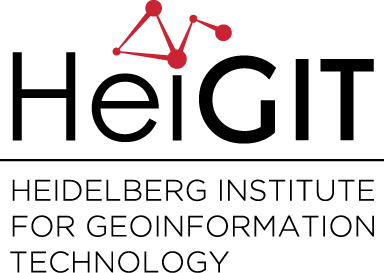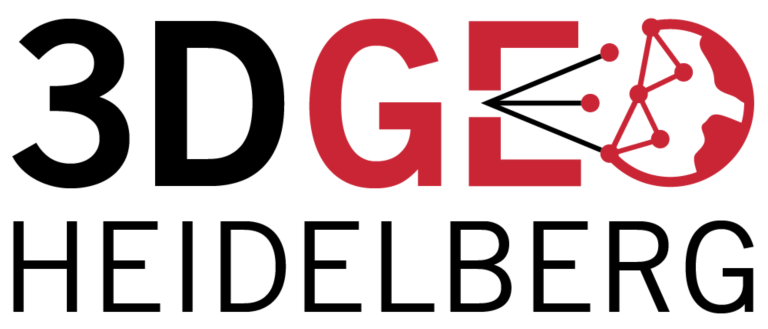Category: 3D
-
New paper published: ‘Effects of Reduced Terrestrial LiDAR Point Density on High-Resolution Grain Crop Surface Models in Precision Agriculture.’
We are happy to announce that a new paper with the title Effects of Reduced Terrestrial LiDAR Point Density on High-Resolution Grain Crop Surface Models in Precision Agriculture has been published in the special issue Agriculture and Forestry: Sensors, Technologies and Procedures in the journal Sensors: 3D geodata play an increasingly important role in precision…
-
MUSIEKE – Multidimensional Perceptibility of Cultural Heritage
The newly funded multidisciplinary research project MUSIEKE investigates the perceptibility and visibility of cultural heritage in multiple dimensions in urban, landscape, museum and virtual spaces. Three-dimensional (3D) data acquisition, processing, modeling and web-based visualization & analysis will provide fundamental input to the derivation and explanation of complex causal relationships of cultural heritage in time and…
-
MayaArch3D: 60-seconds-science-countdown
The project MayaArch3D presents itself in the “60-seconds-science-countdown” in the context of the “Wissenschaftsjahr 2014” (Year of Sciences 2014) of the german Ministry of Education and Research (BMBF). The Year of Sciences 2014 is a series of events and projects dealing with impact of the digitisation on our society. Check out the video at: http://www.digital-ist.de/aktuelles/60-seconds-science-countdown/mayaarch3d.html
-
LVISA video tutorials
Watch out” New video tutorials of “how to use our LVISA system” are available at http://www.youtube.com/user/TheLRGHeidelberg The videos give an introduction of the general usage of LVISA as well as an introduction of the visualization, exploration and analysis of LVISA reference data as well as of own (external) data. LVISA is a novel system for…
-
ISPRS Innsbruck Summer School of Alpine Research 2015 in Obergurgl/Austria – Close Range Sensing Techniques in Alpine Terrain
Together with colleagues from all over Europe we are organizing a Summer School of Alpine Research, which takes place from 5.7.2015-11.7.2015 in Obergurgl, Tyrol, Austria. Motivated students from geosciences/Earth sciences, environmental sciences, geomatics, GIScience, remote sensing, computer science, etc. will be working together in multidisciplinary teams to address challenges in Alpine Research using state of…
-
Online article in 3D Visualization World Magazine: UNESCO World Heritage Site Lorsch Abbey
The online magazine 3D Visualization World (www.3dvisworld.com) features an article about the 3D capturing campaigns at Lorsch Abbey: ‘The UNESCO World Heritage Site of Lorsch Abbey is located in Hesse roughly between Heidelberg and Frankfurt/Main, Germany. Laser scanners generating 3D point clouds of the structure and photogrammetric Structure-from-Motion (SfM) approaches were used to study and…
-
The Chilean newspaper El Mercurio reports about our VGI research
The Chilean newspaper El Mercurio has released an article about Heidelberg’s research on VGI and Neogeography in their Science and Technology section in the issue of 14 July 2014. El Mercurio, Santiago de Chile (No. 41.265), p. A11: Neogeografía: La geografía evoluciona al alero de las redes sociales.
-
Artic Permafrost @ Colloquium GIScience on 23 July 2014
Talk within the Colloquium GIScience on An Attempt to Use InSAR Methods to Detect Vertical Movements in Arctic Permafrost Regions by Inga May, Alfred-Wegener Institute (AWI) Potsdam Wednesday, 23.07.2014, 11:15-12:00h, Hörsaal Geogr. Institut, Berliner Str. 48 As permafrost is a subsurface phenomenon, and not directly visible from space, surface features, representing the permafrost situation underneath,…
-
Successful field trips of the laser scanning course
This summer semester’s laser scanning course comprises a series of field trips done by small student groups of maximum two persons. Campaign planning and hands-on laser scanning in the field were conducted by the students and supervised by professor Bernhard Höfle, tutor Jörn profe, Kristina König, and Martin Hämmerle. Intensive learning for each single participant…
-
AGILE Workshop – Digital Earth: What the hack?
On June 3, 2014, we organised a pre-conference one-day workshop titled Digital Earth: What the hack? in Castellon de La Plana, under the auspices of the International Society of Digital Earth (http://www.digitalearth-isde.org/) and 7th AGILE Conference on Geographic Information Science – Connecting a Digital Europe through Location and Place (http://www.agile-online.org/). Hackathons and mapathons are revolutionising…


